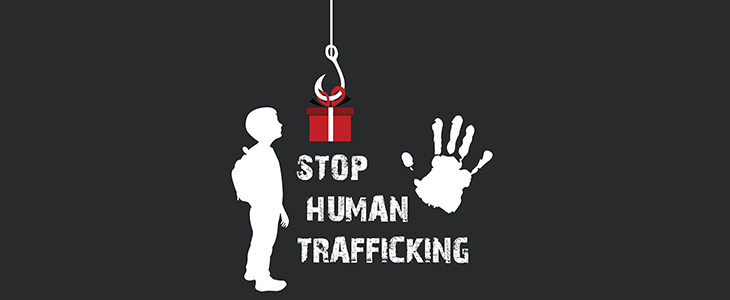
Human traffickers have found an unfortunate and illicit opportunity in child predators. As crimes involving child sexual abuse have reached worldwide endemic levels, crimes like the livestreaming sexual abuse of children, child sex tourism and the production of child sexual abuse material (CSAM) have become increasingly profit-driven, leaving the financial industry exposed to a group of predicate crimes that were not a focus in the past.
These crimes involve coercing children into performing sexual acts as part of human trafficking (HT) operations and in the production of CSAM. While much of this activity relates to specific high-risk countries, it is important to note that the U.S. is both a leading consumer and a producer of this material.
The Child Rescue Coalition (CRC)1 has been using data and technology to support child sexual exploitation (CSE) investigations and rescue children for over 15 years. This data can associate customers with the possession of known CSAM, a crime in virtually every jurisdiction in the world. By leveraging this data as part of the due diligence process, financial institutions (FIs) can identify specific customers for enhanced transaction monitoring. This can be critical to both focusing resources where they are most needed and identifying transactions that may seem innocuous by themselves. Through public-private partnerships with FIs, we have found a simple formula that works: Criminal activity (CSAM) + Suspicious transactions = Actionable information.
CSAM
Understanding the proliferation of CSAM is helpful to understanding the overall scope of the problem, and the statistics are horrifying. CSAM is the staple currency of child sexual predators and is shared abundantly within this community. The National Center for Missing & Exploited Children reports that its CyberTipline received over 36 million reports of CSAM in 2023.2 Facebook removed almost 17 million CSAM files in just the third quarter of 2023.3
Both the rise of the internet and the increasing ease of travel have magnified the modern problem of CSAM and created entirely new opportunities for abuse. It is hard to imagine, but 25 years ago, this crime involved paper catalogs and international mail. CSAM was not even a violation of federal law in the U.S. until 1978 when the Protection of Children Against Sexual Exploitation Act of 1977 was enacted. Unfortunately, times have changed.
It also bears pointing out the devastating nature of CSAM for its victims. Imagine going through life wondering if every person you meet has seen you at the worst moment of your life: your doctor, a blind date, your child’s elementary school teacher, etc. There are even stories of deranged “fans” hunting down victims. Through this lens, it is hard to imagine a more difficult burden to carry through life.
Suspicious Transactions
Unlike some other predicate offenses, suspicious transactions relating to CSE are often difficult to identify by themselves. They tend to be small dollar amounts that, in isolation, can appear innocuous. It often takes outside information, such as adverse media relating to the customer or transactions that are part of a larger pattern of payments, to clearly identify transactions as suspicious. The typologies for each of these offenses are slightly different and will reflect the location and type of customers your institution services.
Live distance child abuse is the real-time livestreaming of sexual abuse of children to be directed and watched by others remotely. The typical transaction pattern for this crime involves small payments, often under $100. These payments tend to originate from older males in Western countries and the recipients tend to be younger payees in high-risk countries. This crime often involves multiple payments to one or multiple similar recipients.
Child sex tourism involves travel to high-risk countries to abuse children, who are often under the control of human traffickers. The specific regions where this occurs are well known among predators and are quite literally tourist hubs for these crimes. Financial indicators for this activity are often travel-related charges, such as hotels, airfare and ATM withdrawals, which are examples of transactions that can be difficult to identify, illustrating the need to know your customers.
Grooming typologies often involve payments for access to the places where children congregate unsupervised. Payments to online chat platforms, multiplayer video games and the like are typical. Payments to unrelated children, unexplained child-aged gifts and gift cards can also be valid indicators.
As you can see, identifying these transactions in isolation can be extremely difficult. Knowing your customer, leveraging outside data and identifying other suspicious transactions can all add needed context. Additional transactions relating to these behaviors and zooming out on related transactions can also offer insight.
There are a number of fantastic tools available to help you define the appropriate typologies for your specific customer base and dial in your transaction monitoring rules. Two of the best are the ACAMS Anti-Financial Crime Toolkit: Exploitative Crimes—Human Trafficking and Online Child Exploitation, and the RedCompass Labs RedFlag Accelerator.
Actionable Information
To be truly impactful, there is one more point to consider. Law enforcement (LE) is overwhelmed and forced to focus their efforts for maximum impact. This almost universally means focusing on opportunities that have the greatest impact on victims. Emphasizing this point, the Internet Crimes Against Children Task Forces, the leading enforcement effort in the U.S., have conducted approximately 184,700 investigations since their inception and arrested more than 10,800 offenders in just 2023.4 Sadly, this incredible effort has failed to eradicate these crimes.
Bottom line is on one hand, FIs need additional facts to identify these transactions as suspicious. On the other hand, child exploitation investigators have an overwhelming number of leads but lack the financial indicators often needed to prioritize their efforts meaningfully. The good news is that the right public-private partnerships can address these gaps, providing both FIs and LE with the additional facts they need to take meaningful action.
Adam Levine, director of Government Engagement, Child Rescue Coalition, Nashville, TN, USA, ![]()
- More information on the CRC: The CRC is a nonprofit organization that builds leading-edge technology for law enforcement (LE) to investigate child sexual abuse and safeguard victims. The mission of the CRC is to protect all children from sexual exploitation through the use of innovative technology, LE partnerships and international collaborations. The CRC has trained well over 10,000 investigators in over 100 countries, who have collectively rescued thousands of children and arrested tens of thousands of predators. To learn more about the CRC, visit https://childrescuecoalition.org.
- “CyberTipline 2023 Report,” National Center for Missing & Exploited Children, https://www.missingkids.org/cybertiplinedata
- “Actioned child nudity and sexual exploitation content items on Facebook worldwide from 3rd quarter 2018 to 2nd quarter 2024,” Statista, August 2024, https://www.statista.com/statistics/1013776/facebook-child-exploitation-removal-quarter/
- “Internet Crimes Against Children Task Force Program,” Office of Juvenile Justice and Delinquency Prevention, https://ojjdp.ojp.gov/programs/internet-crimes-against-children-task-force-program










